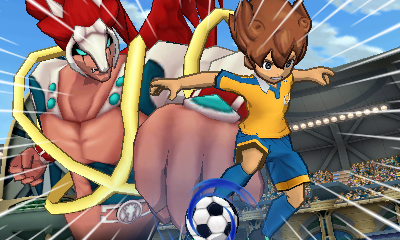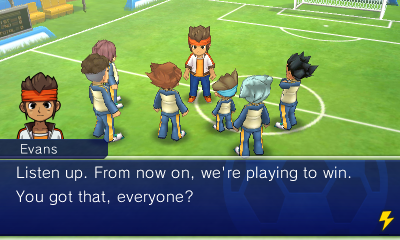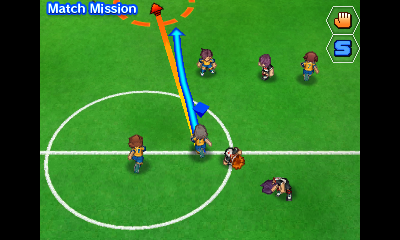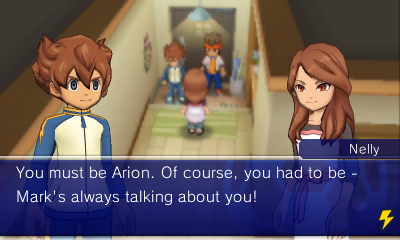Inazuma Eleven Go: Light Review
It is vital that a game manages to grab your attention quickly and keep you entertained throughout its early stages. If the early game is boring, you’re just going to turn it off and play something different, even if you know the later stages are good. Unfortunately, the first five or so hours of Inazuma Eleven Go: Light are tedious beyond belief, filled with pointless movement, boring conversations and an introduction to a story that seems uninteresting and poorly written.
Set 10 years after Inazuma Eleven 3, the world of football has changed. The sport is now governed by a group known as Fifth Sector, who dictate the scores of matches and decide who will succeed and who will fail. You play as Arion Sherwind, an eager youngster who just wants to play football for his favorite school, Raimon. A series of very fortunate events see him jump straight into the first team and, after realizing football is fixed, he tries to convince his teammates to defy Fifth Sector. Returning characters from Inazuma Eleven 3 also join the party to set up a full scale revolution to bring back proper, competitive football and destroy the Fifth Sector dictatorship.

The story is actually quite entertaining once it gets going, but it takes an age for this to happen. Whilst things improve further down the line with a few unexpected twists, getting past the initial story set-up took some serious will power on my part. Had this been a film, I might have walked out.
Perhaps the most noticeable change between the Inazuma 3 series and Inazuma Eleven Go is the switch to a more 3D world, much like the change between Pokemon Black and White and Pokemon X and Y. Cosmetically it looks a lot better: having a full 3D world to explore is great but it just doesn’t feel quite as large as in previous games. The 3D world also means a lot more loading – often you will walk for no more than two seconds in an area and have to wait (only a second or two) for the new area to load. Sure it’s not a massive issue, but it is annoying.

The smaller areas also make the “quests” you have to do seem pointless. A few times you will have to talk to someone to advance the game, but this person will be a 5-second walk away through a door. The short walk just seems unnecessary; why do I need to waste 5 seconds to walk to someone, surely they could have just been a part of the original conversation.
Speaking of conversations, there are a lot of them and very few are voiced, so expect a lot of reading. Even on the occasions where the conversation is voiced, some of the acting is terrible. And the Geordie character, my god, I don’t think I understood anything he said, even the parts that were written down.

Fortunately, the on-the-field action fares much better. The full 11-a-side games are great fun to play. Controlling the action on the lower screen, by drawing runs and tapping to pass and shoot is as good as it has ever been. The small addition of being able to tap on an opposition player to force your team to run towards them makes defending so much easier and the special moves look as amazing as ever, especially with the 3D on.
Perhaps the biggest on-the-pitch additions are the new fighting spirits. Certain players have the ability to summon a fighting spirit to get a massive stats boost and access to new special moves for a limited time. Selecting the right moment to use these is key, as realistically the only way to counter a fighting spirit is to summon another one to fight it. The fighting spirits are a small addition but change the way matches are played, and it makes it quite a bit more entertaining and tactical.

Small battles also return that task you with scoring a single goal, winning the ball or not losing the ball. These will help increase the levels of your teammates, and will need to be done regularly if you don’t want a mammoth grinding session at the end of each chapter to stand a chance in the 11 v. 11 games. Winning battles will result in players wanting to join your team, but again there is little point in recruiting them as the default story players will always be the best and most rounded options.
VERDICT: Inazuma Eleven Go: Light is not a particularly bad game at its core; the actual action is highly enjoyable, while the new visual style looks great but has a small negative effect on gameplay. The biggest issue that the first few hours of the story areincredibly boring and predictable, and it takes too long for anything to happen. Admittedly, it does get better, to a respectable level, but if a game like this takes 5 whole hours to become any good, is it really worth playing?

DECENT. A 6/10 indicates that, while this game could be much better, it still has a fair amount to offer the player. It might be an interesting title sabotaged by its own ambition, or a game denied greater praise by some questionable design choices. Don’t avoid it outright, but approach it with caution.
Review code provided by publisher.




